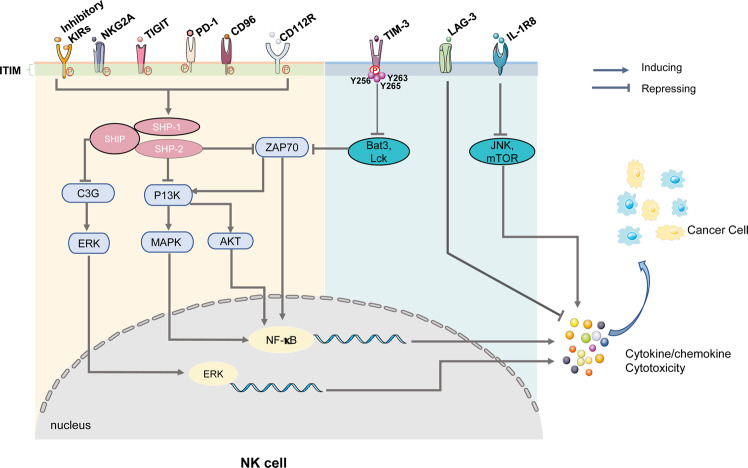Fig. 2.
NK cell inhibitory receptor signaling is required for immune escape. Augmentation of inhibitory checkpoint NK cell receptor activation reduces the antitumor response in NK cells and facilitates the induction of tumor immune escape. In the tumor microenvironment, most of these receptors’ stimulation results in the phosphorylation of immunoreceptor tyrosine tail (ITT)-like motifs on their intracytoplasmic tails. After that, these immunoreceptor tyrosine-based inhibition motifs (ITIM) recruit phosphatases (such as Src homology domain-containing tyrosine phosphatase [SHP] and SH2 domain-containing inositol-5-phosphatase [SHIP]) that inhibit downstream signaling and ultimately suppress NK cell cytotoxic activity. Further research is necessary to understand better the signal mechanisms of these checkpoint receptors (including CD96, CD112R, and LAG-3). Nonetheless, studies have shown that these inhibitory signals attenuate NK cell cytotoxicity and antitumor cytokine/chemokine release, allowing tumor immune escape

